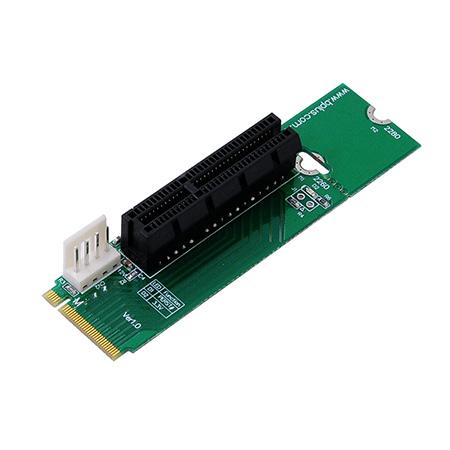- Related articles
- Optical Transceivers for Cisco WS-C2960C-8TC-S Switch
- What is media converter in network?
- Optical Transceivers for Cisco WS-C3650-48TD-S Switch
- Optical Transceivers for Cisco WS-C2960X-48TS-L Switch
- All Cisco DWDM-XENPAK-30.33's information (List price, Specs, Datasheet PDF, Compatibility
- What Is GJYFJCH Fiber Optic Cable?
- Optical Transceivers for Cisco WS-C3650-48FWS-S Switch
- All Cisco DWDM-XFP-42.14's information (List price, Specs, Datasheet PDF, Compatibility ma
- What is 1000BASE Transceiver?
- Optical Transceivers for Cisco WS-C3560V2-24TS-S Switch

PCI Express technically Peripheral Component Interconnect Express but often seen abbreviated as PCIe or PCI-E which is a standard type of connection for internal devices in a computer.
Generally, PCI Express refers to the actual expansion slots on the motherboard that accept PCIe based expansion cards and to the types of expansion cards themselves.
PCI Express has all but replaced AGP and PCI, both of which replaced the oldest widely-used connection type called ISA.

PCI Express x4
In PCI Express x4 x indicates the physical size of the PCIe card or slot, with x16 being the largest and x1 being the smallest. The PCI Express interface allows high bandwidth communication between the device and the motherboard, as well as other hardware.
PCIe cards fit in any PCIe slot on a motherboard that is at least as big as it is. For example, a PCIe x1 card will fit in any PCIe x4, PCIe x8, or PCIe x16 slot. A PCIe x8 card will fit in any PCIe x8 or PCIe x16 slot.
While not very common, an external version of PCI Express exists as well, unsurprisingly called External PCI Express but often shortened to ePCIe.
ePCIe devices, being external, require a special cable to connect whatever external, ePCIe device is being used to the computer via an ePCIe port, usually located on the back of the computer, supplied by either the motherboard or a special internal PCIe card.
Dual Port Gigabit Ethernet Card
Dual Port Gigabit Ethernet Card lets you add two gigabit Ethernet ports to a client, server or workstation through a single PCI Express slot. Each port provides 10/100/1000 Mbps capable Ethernet and is fully compatible with IEEE 802.3/u/ab standards. Suitable for any standard PCI Express-enabled system, the 2-port Ethernet card supports full-duplex flow control for maximum data transfer speeds of up to 2000 Mbps - an ideal single card, dual NIC solution for setting up dual-homed, or multi-homed host configurations providing added security to corporate networks. The Dual Port Gigabit Ethernet Card is compliant with the PCIe 2.0 standard and features support for Jumbo Frames and 802.1q VLAN tagging as well as Wake on LAN (WOL). The adapter includes an optional low profile bracket that can be used for installation into a standard or low profile computer chassis.
Summary
PCI Express, as you read in the sizes and versions sections above, supports pretty much any configuration you can imagine. If it physically fits, it probably works... which is great.
One important thing to know, however, is that to get the increased bandwidth (which usually equates with the greatest performance), you'll want to choose the highest PCIe version that your motherboard supports and choose the largest PCIe size that will fit.





































































